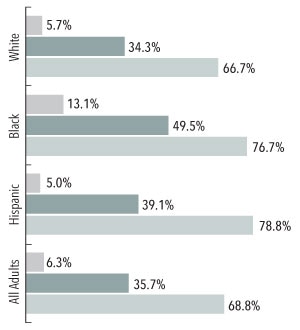Edwards, D. A., Ausiello, D., Salzman, J., Devlin, T., Langer, R., Beddingfield, B. J., Fears, A. C., Doyle-Meyers, L. A., Redmann, R. K., Killeen, S. Z., Maness, N. J., & Roy, C. J. (2021). Exhaled aerosol increases with COVID-19 infection, age, and obesity. Proceedings of the National Academy of Sciences, 118(8). https://doi.org/10.1073/pnas.2021830118
- Feb 2021
-
- Aug 2020
-
covid-19.iza.org covid-19.iza.org
-
Does BMI Predict the Early Spatial Variation and Intensity of COVID-19 in Developing Countries? Evidence from India. COVID-19 and the Labor Market. (n.d.). IZA – Institute of Labor Economics. Retrieved July 29, 2020, from https://covid-19.iza.org/publications/dp13444/
-
- Jul 2020
-
academic.oup.com academic.oup.com
-
Lighter, J., Phillips, M., Hochman, S., Sterling, S., Johnson, D., Francois, F., & Stachel, A. (n.d.). Obesity in Patients Younger Than 60 Years Is a Risk Factor for COVID-19 Hospital Admission. Clinical Infectious Diseases. https://doi.org/10.1093/cid/ciaa415
-
- Aug 2017
-
www.ncbi.nlm.nih.gov www.ncbi.nlm.nih.gov
-
Subject ID, gender, age, BMI, weight, and weight of participants involved in the \"PAGE: The Charles Bronfman Institute for Personalized Medicine (IPM) BioMe BioBank\" project.
Here is another candidate
-
A page note refers to the whole document, in this case to the document produced by the query https://www.ncbi.nlm.nih.gov/gap/?term=5[s_discriminator]%20AND%20bmi&report=SDatasets.
-
-
www.ncbi.nlm.nih.gov www.ncbi.nlm.nih.gov
-
Autocalculated field of BMI: general indicator of the body fat an individual is carrying based upon the ratio of weight to height. BMI = 703 * weight in pounds/height in inches squared
Tags
Annotators
URL
-
- Jul 2017
-
www.ncbi.nlm.nih.gov www.ncbi.nlm.nih.gov
-
Subject ID, age, race, sex, blood pressure, BMI, GOLD stage, heart rate, height, tachycardia, subject group, visit description, oxygen in blood, and weight of participants with or without lung disease and involved in the \"Evaluation of COPD Longitudinally to Identify Predictive Surrogate Endpoints (ECLIPSE)\" project.
Notes my colleagues
-
Subject ID, age, race, sex, visit age, BMI, BODE index, distance walked, forced expiratory volume, GOLD stage, MRC dyspnoea score, prognostic index, SGRQ, subject group, and visit description of participants with or without lung disease and involved in the \"Evaluation of COPD Longitudinally to Identify Predictive Surrogate Endpoints (ECLIPSE)\" project.
-
This subject phenotype table includes gender, race, age, asthma status, anthropometric measurements (n=3 variables; height, weight, and bmi), and smoking status (n=6 variables; ever, current, and former smoking status, number of cigarettes/day, average cigarettes and packs/year).
-
Subject ID, age, race, sex, ethnicity, BMI, BORG, BODE index, cancer, cardiovascular disease, comorbid disorders, CV, distance walked, diabetes, exhaled carbon monoxide, fat free mass, forced expiratory volume, FEV/FVC, FACIT, functional residual capacity, forced vital capacity, failure condition, GOLD stage, height, hypereosinophilic syndrome, haematological disorders, hypersensitivity, inspiratory capacity, impedance, injury, low frequency, metabolic rate, MRC dyspnoea score, MNR, non-psychiatric medical condition, number of exacerbation, obesity related disorders, oxygen in blood, percent fat, prognostic index, predicted normal RV, resonant frequency, residual volume, respiratory tract diseases, specific conductance, subject group, SGRQ-C, trauma, toxicities, TLC, tidal volume, vital capacity, weight, and smoking status of participants with or without lung disease and involved in the \"Evaluation of COPD Longitudinally to Identify Predictive Surrogate Endpoints (ECLIPSE)\" project
Tags
Annotators
URL
-
-
www.ncbi.nlm.nih.gov www.ncbi.nlm.nih.gov
-
Obesity was highly prevalent among the study sample; 64.6% of females and 41.2% of males were obese according to Polynesian cutoffs (BMI ≥ 32 kg/m2). Females were less likely than males to have hypertension (31.7% vs. 36.7%) but equally likely to have diabetes (17.8% vs. 16.4%).

Tags
Annotators
URL
-
-
www.ncbi.nlm.nih.gov www.ncbi.nlm.nih.gov
-
Finally found its BMI distribution... turns out to be in demographic category. So most samples from this study have BMI > 24. Good for us.
-
-
www.ncbi.nlm.nih.gov www.ncbi.nlm.nih.gov
- Feb 2017
-
thefunambulist.net thefunambulist.net
-
Body Mass Index (BMI)
Sure, although it was an innovative new scale of measurement at the time, I think it's still really important to recognize the fairly dangerous limitations that BMI, and even IQ, offered (and continue to offer us today). I highly doubt Galton or Quetelet ever considered the potential harm that their "scales" could inflict, but they created objective standards for qualities that are inherently nuanced. BMI, for instance, has no allowance for the relative proportions of bone, muscle, and fat in the body. Bone is denser than muscle, which is also denser than fat; so a person with strong bones, good muscle tone and low fat will have a high BMI and therefore be considered overweight. Disturbingly, contemporary institutions have still hold a lot of stock in these antiquated measurements, which leads me to this jarring middle school flashback: my gym teacher calculated the BMI of all the adolescent girls in my class and declared 1/3 of us to be approaching emaciation, 1/3 to be "normal" and the other 1/3 to be obese. In hindsight, it's a miracle that I emerged from that lesson without any serious body dysmorphia issues. Thx Quetelet.
-